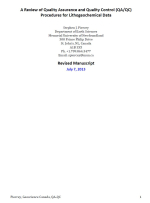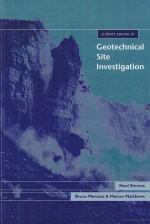Through the years, geologists, mining engineers, and others operating in the minerals field have used various terms to describe and classify mineral resources, which as defined herein include energy materials. Some of these terms have gained wide use and acceptance, although they are not always used with precisely the same meaning.
The U.S. Geological Survey (USGS) collects information about the quantity and quality of all mineral resources. In 1976, the USGS and the U.S. Bureau of Mines developed a common classification and nomenclature, which was published as USGS Bulletin 1450-A—“Principles of the Mineral Resource Classification System of the U.S. Bureau of Mines and U.S. Geological Survey.” Experience with this resource classification system showed that some changes were necessary in order to make it more workable in practice and more useful in long-term planning. Therefore, representatives of the USGS and the U.S. Bureau of Mines collaborated to revise Bulletin 1450-A. Their work was published in 1980 as USGS Circular 831— “Principles of a Resource/Reserve Classification for Minerals. <...>













